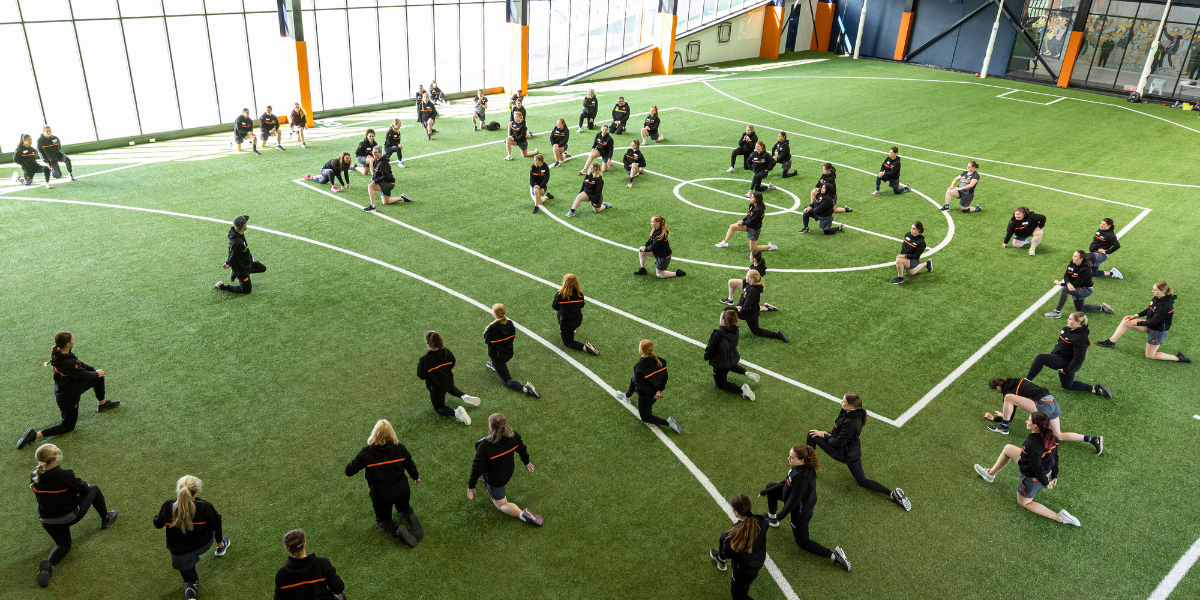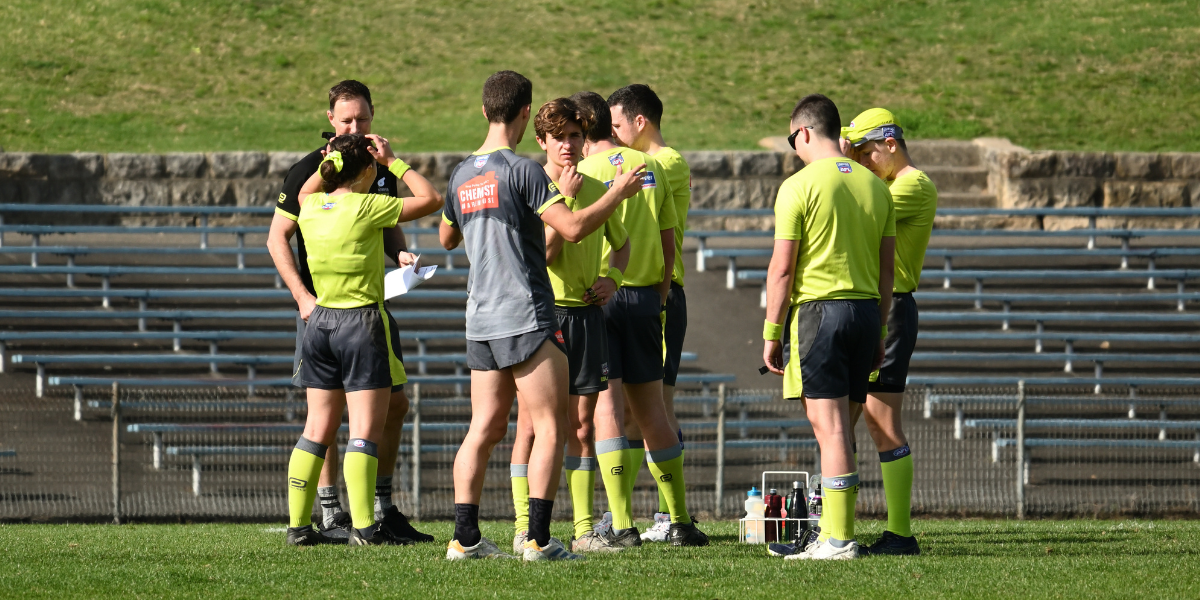Community Umpire Training Program
Section 1
Introduction
The following resources include exercise and activity ideas for training, matchday and individual programs across all three disciplines. Umpires may wish to do some of these activities on their own, or umpire coaches may wish to incorporate them into training session.
Delivering Great Coaching
Role of the Coach
- Builds a positive, encouraging environment to help umpires handle the pressures of games.
- Supports umpires in developing confidence and professionalism.
- Provides training to improve umpiring skills, including positioning, decision-making, and understanding of the rules.
- Teaches umpires how to anticipate play, position themselves effectively, and manage on- and off-field interactions.
- Reviews game footage and performance to give constructive, actionable feedback.
Helping Umpires Learn New Skills
- Design practice scenarios where umpires can develop and apply skills independently, building a deeper understanding through active learning.
- Focus on providing direction and feedback that help umpires self-assess and self-correct, empowering them to make decisions and grow autonomously.
- Employ open-ended questions to prompt umpires to think critically about their decisions and actions, encouraging reflective learning and problem-solving.
- Observe closely without over-instructing, letting umpires' actions and decisions inform your feedback, which creates a learning environment focused on their independent progress.
- Design drills and game scenarios where the outcomes naturally illustrate key learnings, allowing umpires to draw conclusions from their own experience and performance.
Creating Engaging Sessions
- Structure sessions to ensure umpires are actively engaged with minimal downtime, maximising the time spent on skill-building and decision-making.
- Divide umpires into small groups or pairs to increase participation and practice opportunities, facilitating individual attention and focused coaching.
- Ensure each discipline has plenty of equipment (e.g. balls) and opportunities to practice positioning, communication, and skills in dynamic settings.
- Offer concise, impactful instructions or questions that encourage focus on a single aspect of improvement, allowing umpires to concentrate on specific areas during practice.
Set up challenging scenarios that require umpires to think on their feet, promoting adaptive thinking and decision-making rather than rote repetition.
3 Key Points on Instructions
► The most effective instructions act as simple, memorable cues that direct umpires’ focus to essential details, aiding quick assessment and performance improvement without overwhelming them.
► Over-reliance on instructions can lead to dependency, where umpires look to coaches for guidance instead of building the confidence to make independent, in-game decisions.
► Unlike training environments, specific instructions are usually unavailable during actual games, so it's essential that instructions in practice empower umpires to internalise and apply skills autonomously.
Section 2
Inclusive Enviroments
Being part of Umpire training is an important aspect of being part of the umpiring team. Like with all teams it’s important everyone feels welcome and included, check out the below resource to ensure your training space is inclusive for everyone.
The AFL is committed to promoting and protecting the well-being of everyone who participates in AFL at any level. Umpire groups are a place for everyone - you can find out more about creating an inclusive environment below.
- LGBTQI+ Inclusion
- Aboriginal and Torres Strait Islander Inclusion
- Multiculturalism
- Disability Inclusion
- Safe and Inclusive Use of Umpire Changerooms
Section 3
Body Management
LOAD MANAGEMENT
Injury prevention strategies are designed to reduce the risk of injuries during umpiring activities. Load management encompasses a wide range of measures aimed at minimising the likelihood of injuries.
Key components of injury prevention include:
- Proper Warm-Up: Engaging in a thorough warm-up routine before exercise or sports can increase blood flow to muscles, improve flexibility, and prepare the body for physical exertion, reducing the risk of strains and sprains.
- Proper Technique: Using correct form and technique during exercises is crucial for preventing injuries. Poor form can lead to overuse injuries or acute injuries.
- Strength and Conditioning: Building strength, flexibility, and endurance through targeted exercises can help prevent injuries by improving overall physical fitness and reducing muscle imbalances.
- Rest and Recovery: Giving the body adequate time to rest and recover between workouts or intense activities is essential for injury prevention. Overtraining can increase the risk of injuries.
- Proper Gear and Equipment: Wearing appropriate footwear, protective gear, and using well-maintained equipment can help reduce the risk of injuries, especially in sports.
- Education: Understanding the specific risks associated with a sport or activity and how to mitigate them through training and proper preparation is crucial for injury prevention.
Strength training
A type of exercise that focuses on increasing muscular strength and endurance. It involves the use of resistance, such as free weights, weight machines, resistance bands, or body weight, to challenge the muscles.
Key aspects of strength training include:
- Progressive Overload: To build strength and muscle, you must progressively increase the resistance or intensity of your exercises over time.
- Compound Movements: Compound exercises, like squats, deadlifts, bench presses, and pull-ups, engage multiple muscle groups and are effective for overall strength development.
- Isolation Exercises: These target specific muscle groups and can be useful for addressing muscle imbalances or focusing on particular areas of the body.
- Proper Form: Maintaining correct form is crucial during strength training to reduce the risk of injury and ensure that the targeted muscles are worked efficiently.
- Recovery: Adequate rest and recovery between strength training sessions are essential for muscle repair and growth.
Strength training can help improve physical performance, increase bone density, boost metabolism, and enhance overall fitness. When performed with proper technique and in conjunction with injury prevention strategies, it can reduce the risk of injuries by strengthening muscles and stabilizing joints. Additionally, strength training can be tailored to specific sports or activities to address the unique physical demands of each.
Injury Prevention and Strength Training Resources
The Body Armour Series provides an effective and applicable strength/mobility program to help provide armour against most common injuries for umpires. This program requires no equipment, so can be completed anywhere, at any time.
View the Body Armour Series here.
The strategies and practices outlined in the ‘Body Management’ section of this Community Umpire Training Program are intended for educational and informative purposes only and are not intended to serve as professional or medical advice. Before beginning any new exercise program, the AFL strongly recommends consulting with a qualified healthcare professional, especially if you have any pre-existing medical conditions, recent injuries, or any other health/safety concerns about engaging in physical activity. A healthcare professional can help ensure that any exercise program is safe and appropriate for your individual needs and circumstances. The AFL does not assume any responsibility for injuries, health issues, or adverse effects which may occur because of engaging in the activities outlined in the Community Umpire Training Program.
View the Body Weight Flush Recovery Sessions here.
The Strength A and B Series is designed to enhance strength and power of key movements related to running, throwing and bouncing. This program is most suited to field and boundary umpires and should be completed 2-days a week (post-running).
View the Strength – Series A and B here.
A proper warm up prior to training sessions and matches efficiently prepares your body for the physical task ahead, as well as reducing the likelihood of injury. The Movement Preparation and Extras program suggests movement sequence options for Mobility/Activation, Running Preparation and Change of Direction to complete prior to training and matches.
Tips for Injury Prevention and Recovery
- Prioritise specific recovery activities immediately following training sessions or games to support physical restoration and injury prevention.
- Use cooldown exercises, stretching, and relaxation techniques to restore muscle function, improve flexibility, and reduce muscle soreness.
- Rehydrate with water or electrolyte-rich fluids and refuel with foods high in carbohydrates and protein to replenish energy stores and support muscle repair.
- Ensure adequate rest and quality sleep, to promote muscle restoration, reduce injury risk, and improve performance in subsequent sessions.
Rest Days
- General Rule 1 Day on / 1 Day off for the same type of training, e.g. Running – allows muscles, bones, tendons and ligaments to repair and adapt
- Have minimum 1 day fully off impact loading
- Exchange 1 running session with non-impact aerobic session (bike, rower, swimming, cross-trainer)
- Have minimum 1 day of FULL REST per week
- Unless you are a world-class athlete, RECOVERY RUNS are NOT beneficial
- You don’t need excessive amounts of training to umpire
- Promotes balance in your life
Sleep is #1 for recovery
- Sleep is the most important recovery tool
- Beats compression, ice baths, supplements, massage, cryochambers, etc.
- Sleep environment
- Dark, cool, quiet, clean, distraction free
- Routine
- Same wake and sleep time
- Consistency body catches on
- E.g. read a book for 15 min before bed, meditation
- Avoid Caffeine/food/fluid ingestion
- Light in the morning, dark at night
- Don’t nap too late or too long
- Aim for 10 hours + in bed
Nutrition
- Think food is fuel to recover better and train harder
- For tips on refuelling, nutrition and hydration visit these websites:
- Sports Dietitians Australia: https://www.sportsdietitians.com.au/
- My Sports Science: https://www.mysportscience.com
Mental Well-Being / Psychology
- Increase in our stress hormone decreases ability to repair muscles and decreases adaptation in key physiology related to performance, e.g. aerobic, speed, power, etc.
- Stress also decreases motivation, attention span and ability to make decisions
- Our immune response is also affected
- Physical recovery vs mental recovery
- Have activities away from sport/umpiring/running that help you unwind
- Learn more about Mental Health and Wellbeing here
Periodisation
- Deliberate manipulation and balance of training variables.
- Type - Running, strength, power, speed etc.
- Volume
- Intensity
- Recovery
- End goal - optimise performance
- Prevents overtraining and detraining
Female Health and Menstruation
- It is important for coaches to understand how the female body works and how the menstrual cycle can impact the ability to train and perform.
- As a coach, it is essential to build genuine relationships with your umpires so that they are comfortable to speak with you when any issues or concerns arise about training or matchday.
- Coaches are encouraged to complete the AIS Female Performance & Health Initiative Education Module
- This module will help to increase your knowledge regarding health and performance considerations when coaching female athletes. It includes coaches discussing their personal experiences and recommendations for coaching female athletes.
- As a coach, it is essential to build genuine relationships with your umpires so that they are comfortable to speak with you when any issues or concerns arise about training or matchday
Section 4
Training and Match Day Warmups & Cool Down
Pre-Training and Match Day Warm Up
Physically prepare your body for what you’re about to ask it to do (training, game etc.)
Pre-field Warm Up – Activation & Mobility
- Initiate warm up of specific muscles
- Mobilise joints
- Strengthen areas for performance and injury risk reduction (refer to the body management section for injury prevention ideas).
On-field Warm Up
- Mentally switch on
- Run
- High Intensity Efforts
- High Speed Running
- Change of Direction – hard lateral movements, accel, 45/90 deg cuts.
- Backward Running
- Ball Up / Throw-in / Bounce – Discipline-Specific
Section 5
Pre-season and In-season Training
Why do you need to train (physical preparation) as an umpire?
- Conditioning, strength, agility, speed and general physical health assist with umpiring at your peak
- Getting into the right positions quickly to make decisions
- Being able to back these efforts up throughout a match
- Assist with mental clarity, decision-making and composure
- Physical fitness →less chance of injury →more time training/umpiring →more time building fitness.
Match the physical demands required
- Match the demands of what you’re asking your body to complete.
- If you are training to run a marathon, your training shouldn’t comprise of lots of sprint sessions.
- If you are a goal umpire, you aren’t going to train like a boundary umpire.
Specificity and context
Umpire disciplines and different levels of competition will require different physical demands.
Different levels of individual fitness will require different training stimuli to elicit appropriate physiological adaptation.
E.g. Umpire A who is very fit runs 800m in 3 min. VS Umpire B who is less fit should not match that time.
Why? Reduce risk of injury, avoid burnout, build fitness gradually.
Effective Strategies to Optimise Training
•Training Sessions
•Rest Days
•The Right Amount of Training
•Strength Training
Pre-Training & Warm Up | Post Training | Rest Days |
•Physically prepare your body for what you’re about to ask it to do (training, game etc.) •Pre-field Warm Up – Activation & Mobility •Initiate warm up of specific muscles •Mobilise joints •Strengthen areas for performance and injury risk reduction •On-field Warm Up •Mentally switch on •Run •High Intensity Efforts •High Speed Running •Change of Direction – hard lateral movements, accel, 45/90 deg cuts. •Backward Running •Ball Up / Throw-in | •Focus is on restoration •Hydrate and refuel with carbohydrate and protein rich foods •Rest & sleep (if at night). | •General - Rule 1 Day on / 1 Day off for same type of training •Running – Allows muscles, bones, tendons and ligaments to repair and adapt •You don’t need excessive amounts of training to umpire •Promotes balance in your life |
The Right Amount of Training
There is no ‘perfect’ amount, but there is anecdotal consensus
Field/Boundary Running 3-4 times per week, Goal 2-3 times per week
Pre-Season
- 3x runs per week
- Training Session 1 (T1): Long Intervals 90 sec –4 min. e.g. 2 x (3 x 2 min Effort : 2 min recovery)
- Training Session 2 (T2): Short Intervals 10-90 sec. e.g. 2 x (10 x 15 sec : 15 sec recovery)
- Training Session 3 (T3): Mix of Long & Short Intervals w/ match movements or match sim
- T1 –5-10km
- T2 –4-8km
- T3 –Build towards Appropriate Game Demands
In-Season
- 3x runs per week
- Training Session 1 (Long Intervals) 90 sec –4 min. Eg2 x (3 x 2 min Effort : 2 min recovery)
- Training Session 2 (Short Intervals) 10-90 sec. Eg2 x (10 x 15 sec : 15 sec recovery)
- Training Session 3 (Game or Match Sim)
Progressively overload training
- Running volume, intensity, speed, change of direction, strength
- Hitting 90%+ of your top speed 1-2 times per week.
- Include skill drills to condition your body for game-like demands with decision-making.
Strength Training
- Improve performance.
- Improve resilience to injury.
Training Load
What is it & Why is it Important?
- Objective measure aimed to quantify physical output
- Safely guide appropriate progression in your fitness while reducing injury risk.
Training Loads need balance:
- Appropriate training stimuli
- Quality sleep
- Balanced lifestyle
- Adequate Recovery
How to manage it?
- Aim for small increases in training (progressive overload)
- Avoid spikes in training load
- Be open and honest – talk to your coaches or high performance staff
- Doubling up matches
Click on the links below to access the following documents to help you set up your yearly training plan and training sessions
Section 6
Field Umpiring Training
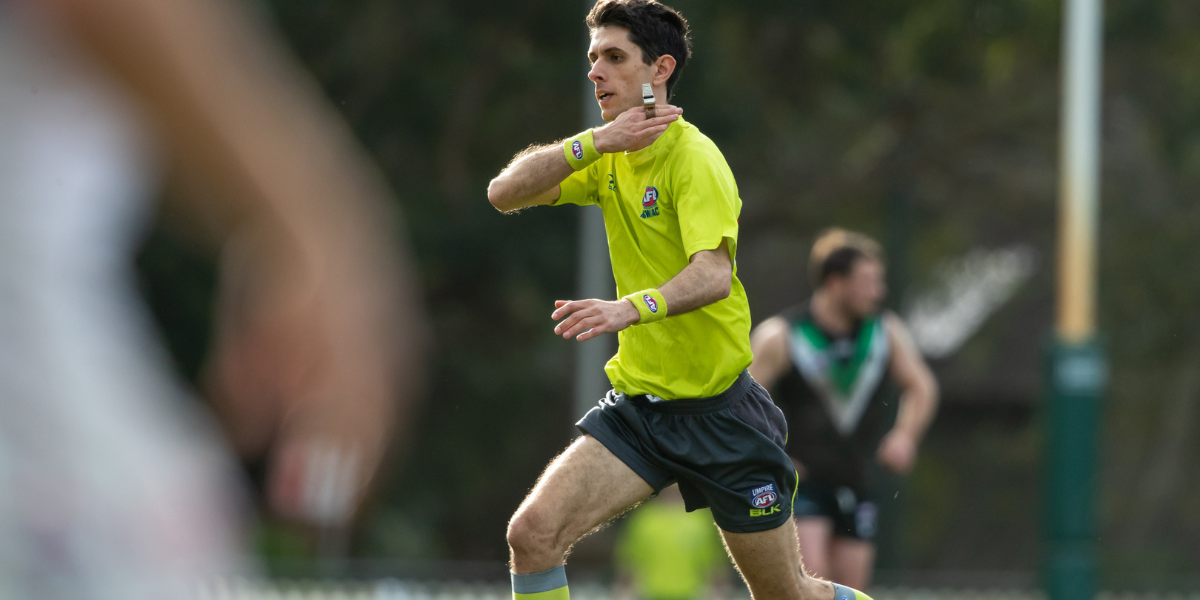
- Field Umpiring Training Sessions should incorporate a balance of:
- Physical conditioning that works toward meeting match requirements (e.g. aerobic and anaerobic fitness, including power, strength, speed, agility (Change of Direction), acceleration and endurance)
- Skill Drills that replicate match simulation (can also be used as a relevant conditioning)
- Coaching and Education
- Fun and games to build connection between umpires and increase motivation
physical conditioning
Pre-Season
2024 Field Umpire Preseason Programs
In-Season
AFL Field Umpire – In-season conditioning sessions (2022 – 3 umpire system)
AFLW Field Umpire – In-season Conditioning, Skill Drills – 3 umpire system
Previous Seasons Field Umpire Program Templates
skill drills
Field Umpiring Skill Drills Booklet (SANFL)
Field Umpire Skill Drills (WAFC)
Section 7
Boundary Umpiring Training
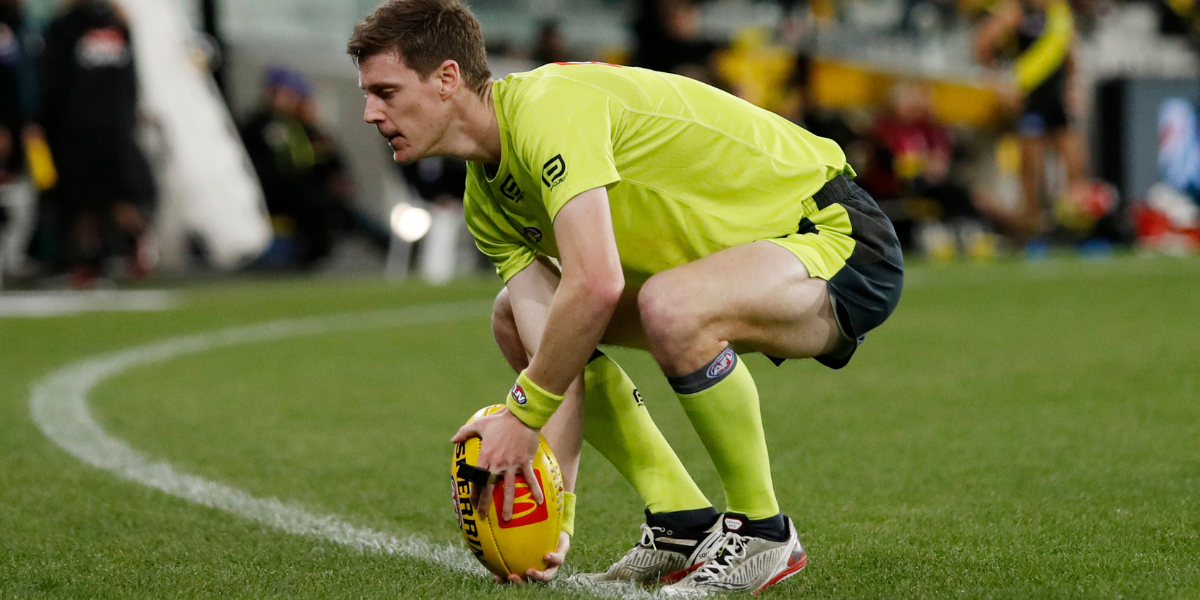
Boundary Umpiring Training Sessions should incorporate a balance of:
•Physical conditioning that works toward meeting match requirements (e.g. aerobic and anaerobic fitness, including power, strength, speed, agility (Change of Direction), acceleration and endurance)
•Skill Drills that replicate match simulation (can also be used as a relevant conditioning)
•Coaching and Education
•Fun and games to build connection between umpires and increase motivation
physical conditioning
Pre-Season
2024 Boundary Umpire Preseason Program
In-Season
AFL Boundary Umpire – In-season, Top Up and Skill Drill Sessions
AFLW Boundary Umpire – In-Season Conditioning, Skill Drills
Previous Seasons Boundary Umpire Program Templates
skill drills
Boundary Umpire Skill Drills – scroll down the page to find 21 skill drills
Section 8
Goal Umpiring Training
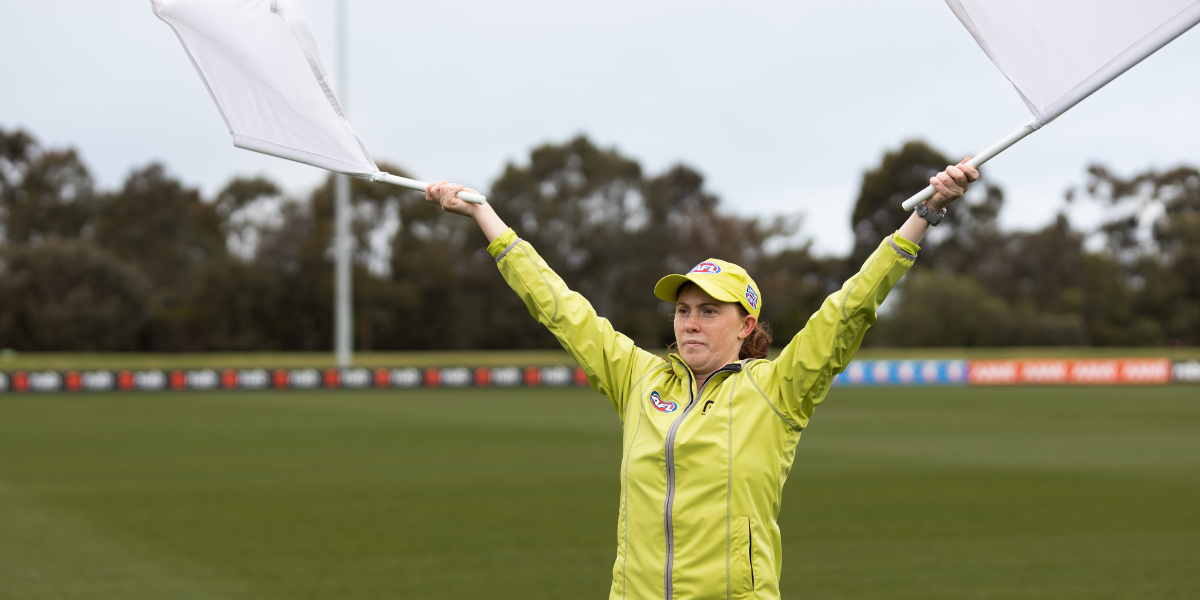
Goal Umpiring Training Sessions should incorporate a balance of:
•Physical conditioning that works toward meeting match requirements (e.g. aerobic and anaerobic fitness, including power, strength, speed, agility (Change of Direction), acceleration and endurance)
•Skill Drills that replicate match simulation (can also be used as a relevant conditioning)
•Coaching and Education
•Fun and games to build connection between umpires and increase motivation
physical conditioning
Pre-Season
2024 Goal Umpire Preseason Program
In-Season
AFL Goal Umpire – In-season Conditioning, Change of Direction and Skill Drills
AFLW Goal Umpire – In-season Conditioning, Change of Direction, Acceleration
Previous Seasons Goal Umpire Program Templates
Skill drills
Section 10
Foundation Umpire Resources
COACHING AND EDUCATION MODULES
FIELD UMPIRES
- Playbook
- 50m Penalties
- Deliberate Rushed Behind
- General Play
- Holding the Ball Prior Opportunity
- Holding the Ball
- Insufficient Intent
- Management
- Prohibited Contact
- Rough Conduct
- Ruck Contests
- Team
BOUNDARY UMPIRES
- Boundary Throw In
- Playbook
- Skills, Teamwork, Communication, Workrate
- 2024 Boundary Umpire Coaches Manual
GOAL UMPIRES
- AFL Goal Umpire Consultation Notes
- AFL Goal Umpire Performance Principles
- ARC Goal Umpire Vision - VFL Coaching
- Assists, Online & Depth – AFLW Goal Umpire Coaching
- Behind Line Scenarios – AFLW Goal Umpire Coaching
- Finals Coaching 1 – AFL Goal Umpire Coaching
- Finals Coaching 2 – AFL Goal Umpire Coaching
- Fundamentals 1 – AFL Goal Umpire Coaching
- Fundamentals 2 – AFL Goal Umpire Coaching
- General Positioning & Awareness – AFL&W Goal Umpire Coaching
- Goal Umpire Performance Principles – AFLW Goal Umpire Coaching
- Online and Behind the Ball – AFLW Goal Umpire Coaching
- Online, Timing & Depth – AFLW Goal Umpire Coaching
- Position Online and Reaction – AFLW Goal Umpire Coaching
- Preseason AFL Goal Umpire Coaching Focus Areas
- Read of Play & Offline – AFLW Goal Umpire Coaching
Content created by AFL Umpiring Department (2023) and some rule interpretations or requirements may be different for your community league
